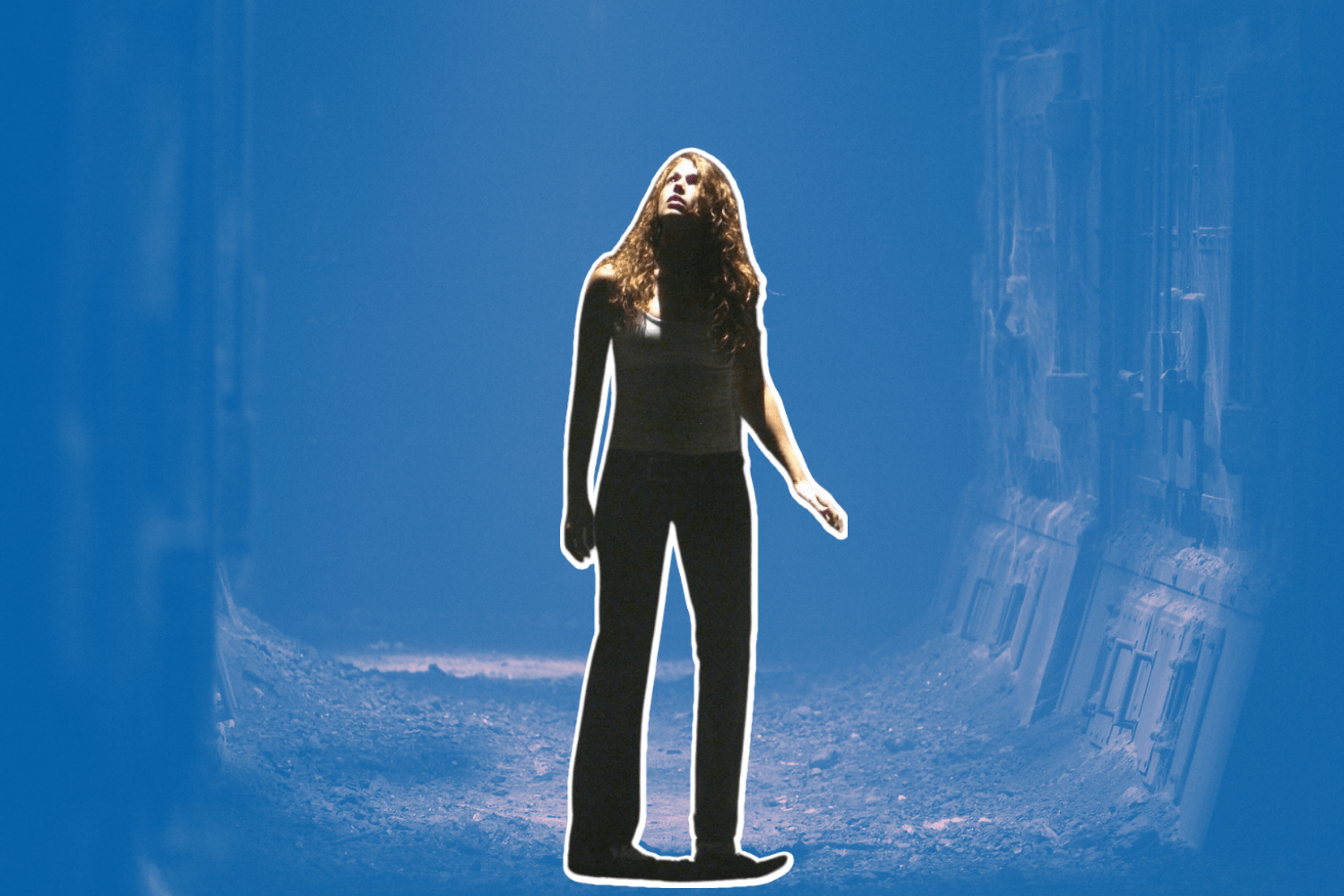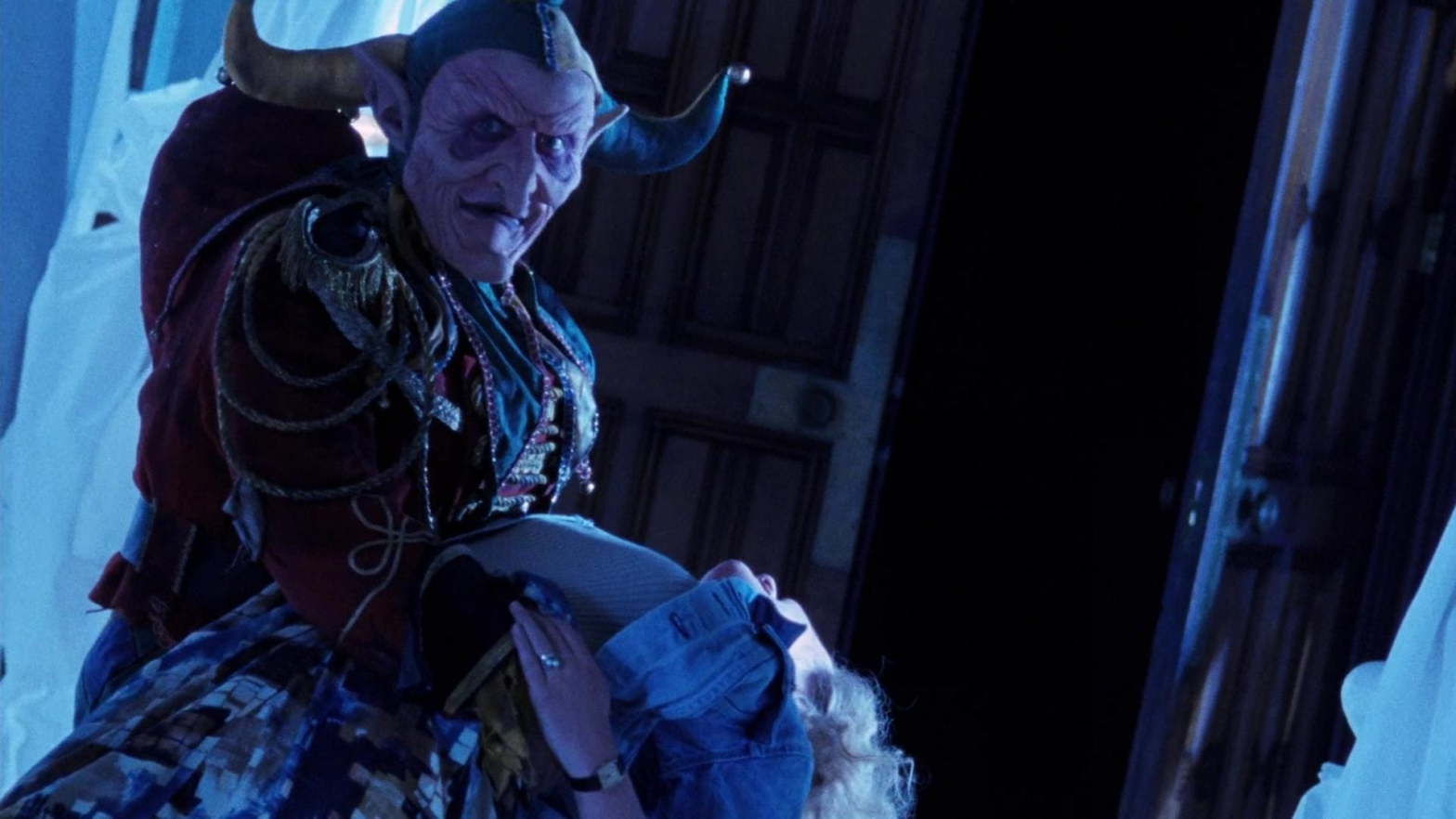Editorials
The Interactive Horrors of ‘Return to House on Haunted Hill’
December 7th, 2021 | By Chris McMullen

Return to House on Haunted Hill is quite a film. If you’ve only ever seen the DVD version of the 2007 release, you’re probably scratching your head at that statement — it’s true that, viewed in a linear manner, it’s not going to win any Oscars. But as a rare example of interactive cinema, it’s an appealing curio and a reminder of what might have been.
Interactive cinema — where a viewer can alter the course of a film or show — isn’t a particularly new concept. Let the Blood Run Free, for example, an early 90s spoof of Australian soaps, ended each episode on a cliffhanger and let audiences vote to determine how it was resolved. And the DVD of Final Destination 3, which was released a year before Return, sported a “Choose the Fate” feature which let you decide how a character died.
Warner Bros. saw Blu-Rays and HD-DVD as the future of interactive cinema. To be fair, they had a point — double-layer Blu-Rays can hold ten times as much as a standard DVD. Why is capacity important? Because the more choices interactive cinema offers, the more alternative scenes you need stored on the disc, e.g. one where a character is present and another where, having met a gruesome end, they’re entirely absent.
Warner seemed intent on using these new higher capacity formats to kickstart an interactive cinema revolution, with Return to House on Haunted Hill as their vanguard. Why that particular movie? It probably helped that, at the time, they were affiliated with Dark Castle Entertainment, the studio behind 1999’s horror remake House on Haunted Hill.
On top of that, Dark Castle Entertainment was also named after director William Castle, whose movies (the original 1959 House on Haunted Hill included) featured such oddball, ground-breaking gimmicks as a skeleton that flew through the audience mid-movie. Attempting to innovate in this manner seems entirely appropriate.
So when the straight-to-video sequel Return was in the cards, they saw an opportunity to deliver a truly interactive cinema experience. Warner went so far as to promote it as the next big thing at 2007’s Las Vegas Home Media Expo. They even enlisted the help of Joel Silver, one of the founders of Dark Castle Entertainment, who co-produced the original House on Haunted Hill.
“This is navigational cinema. It’s a whole new age, and people are going to love it,” he claimed. “You become a filmmaker, where you are part of the process of making the movie. If you want everyone to die, you can do that!” He was right: you can let everyone in Return die, and it’s one of the movie’s more memorable scenes.
Return to House on Haunted Hill follows the sister of one of House’s original — now deceased — survivors. Soon she is kidnapped by art thieves and forced to enter the titular house. Their questionable thinking is that she’ll be able to find a valuable idol in a mansion she’s never visited. But the movie does get points for making avarice, not vengeance, the villains’ motivation.
House aside, the only returning star is Jeffrey Combs who once again portrays the nefarious (and ghostly) Dr. Vannacutt. Vannacutt is the movie’s big bad who, under the idol’s influence, conducted some horrific experiments on his patients. Combs’ presence gives the film a boost but it’s clear from the get go that it was filmed on a relatively low budget. To make the most of limited resources, director Victor Garcia filmed it in Bulgaria; that’s not to say low-budget horror can’t work, it can, but a low-budget interactive movie?
Watch Return to House of Haunted Hill on Blu-Ray and you’re presented with seven choices which Warner boasted could lead to 96 different story paths. Some of these are for show, while others have serious, sometimes fatal outcomes. With one exception, the movie doesn’t branch in the same way that a Choose Your Own Adventure book does. What it does do is tick off your choices and serve up the consequences at an appropriate moment.
At one point, the viewer is asked if a character, Harue, should succumb to a pair of lesbian ghosts. Surrender to the Sapphic specters and — after an admittedly gratuitous scene — they hiss and urge her to flee the house. She obliges, screaming as she runs outside. If you choose to reject their advances, Harue flees directionless; soon she runs into Dr. Vannacutt, who dispatches her in a suitably gruesome fashion. This time it is her death scream that echoes around the mansion. So no matter what you choose, the characters in the next scene always hear a scream.
It’s a smart move that ensured director Garcia didn’t have to shoot all the scenes twice. Whatever happens, at the end of the movie a holidaying couple stumbles across the idol. But if Harue lives she guns them down and takes it, before heading off to cash in. Yes, it’s a rather silly scene, but it’s typical of the way that Return plays with movie tropes and, often, confounds your expectations. In a lot of horror movies, sex is a death sentence, but not here. The idea of a final girl, of splitting up being a terrible, terrible idea, all these conventions are touched upon and sometimes subverted.
Return’s navigational features certainly do a lot of the heavy lifting, which is particularly evident when you sit through the linear version of the movie. And yet, what’s truly remarkable is that the interactivity was a late addition. Garcia admitted it was only added just before principle photography and that it was barely in the script that Jeffrey Combs was given.
“The thing to remember is that this wasn’t just a regular movie, there were all kinds of variations and different versions of scenes … logistically it was a nightmare,” stated Combs in another interview. Actress Cerina Vincent echoed this sentiment: “What was frustrating was when we got to Bulgaria there was all of this added stuff … this completely makes you deviate from your character, so now if I’m making these other choices in the film, how does my character feel about it – it’s confusing.”
As bland as some of the characters are, making you responsible for their fates strengthens the impact of their demise, whether you react with open-mouthed horror or raucous laughter. Having the movie pause to offer you a choice might sound distracting, but you’ll be too absorbed in pondering the potential consequences to really notice. Is having a character run away from their potentially murderous captor a smart move or does it just mean they’ll be easier pickings for Dr. Vannacutt?
“This is the first time this has been done before,” boasted Joel Silver at the aforementioned Home Media Expo. Unfortunately, it was also the last, up until 2019’s Batman: Death in the Family. Return to Haunted Hill performed badly, sinking any hopes of a sequel, interactive or otherwise. Dark Castle Pictures also abandoned their role as a horror-only studio and diversified into different genres. And despite Warner’s initial fanfare, the only mention of Return’s navigational cinema is a small chunk of text on the top-right rear of the case. You certainly wouldn’t know unless you turned the case over and squinted.
As interactive cinema goes, Return to House on Haunted Hill shows what could, and still can, be accomplished with Blu-Ray. Despite Return’s reduced budget, there’s virtual blood all over the place, but there are still plenty of excellent physical effects and, mercifully, it lacks the last movie’s CGI death cloud. But if Warner really were looking to usher in a new age of Blu-Ray-based interactive movies, they needed to kick off with a horror film masterpiece — or at least a big-budget blockbuster. Return to House on Haunted Hill is neither. But it is a fascinating cinematic curio and a glimpse of what navigational cinema might have accomplished. William Castle would certainly approve.
Visit our Editorials page for more articles like this. Ready to support more original horror criticism? Join the Certified Forgotten Patreon community today.


